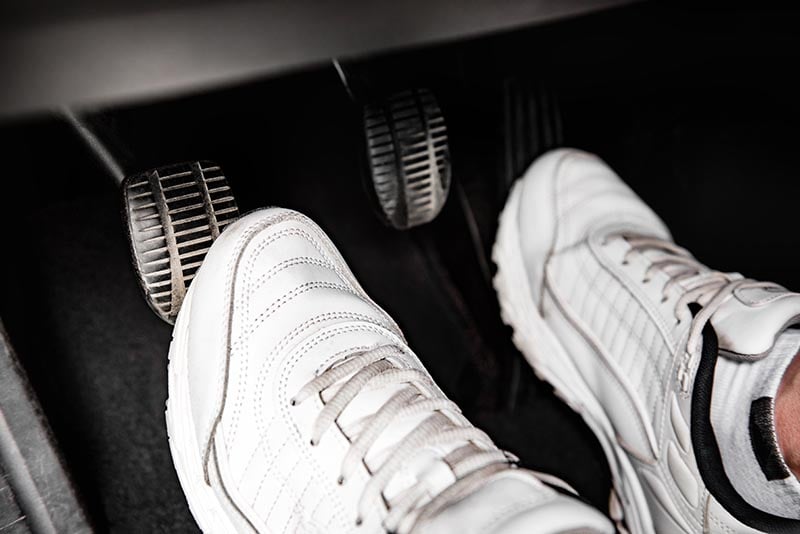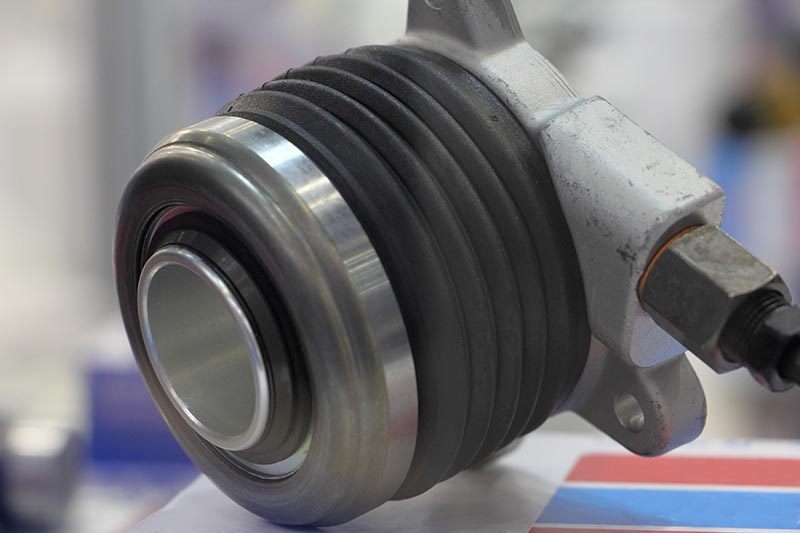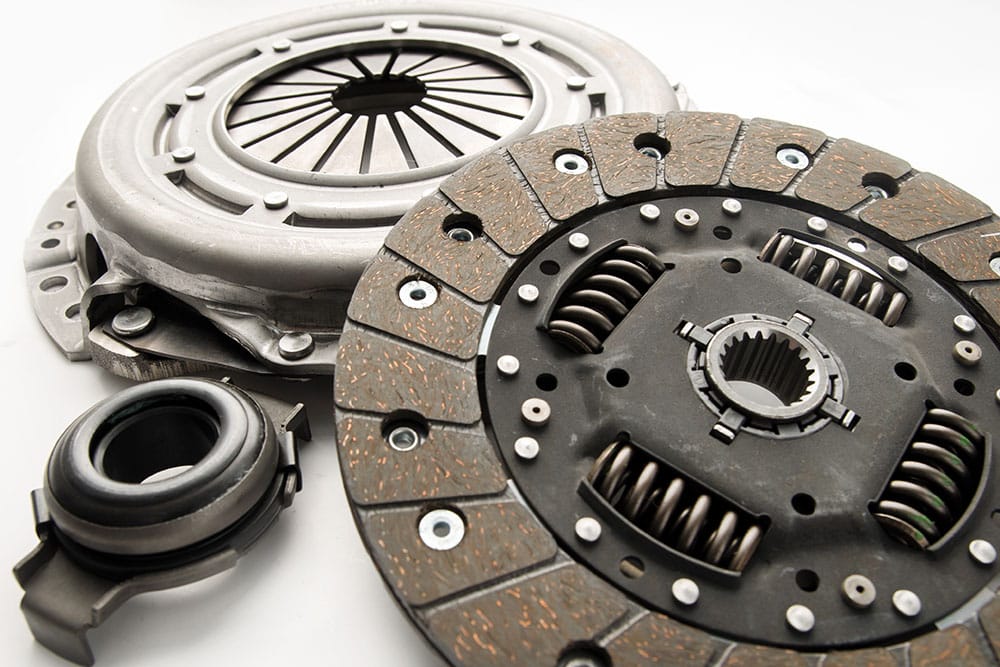How Does a Clutch Work? What You Need To Know
-
Codee Chessher
- Last updated:

Anyone who can drive a stick shift car already knows that a clutch is the third pedal you use to shift gears, but many folks don’t know anything beyond how to use them to get to their destination. A clutch is a device that allows you to disconnect your engine from your vehicle’s wheels. In automatic cars, a torque converter performs the same function. This is essential because while your engine constantly spins while running, your wheels don’t. This is where the clutch comes into play.
Clutches are very interesting and complex devices, and we couldn’t drive our cars without them. How does a clutch work, anyway? Let’s take a closer look at the answer to that question and plenty of more relevant info below.
 How Does a Clutch Work?
How Does a Clutch Work?
A clutch is composed of a few main components, but it works hand in hand with the transmission. Because these components determine how a clutch works, let’s briefly cover each part and what it does.

Parts of the Clutch
- Pressure plate: attached to the flywheel and clutch cover, the pressure plate exerts pressure on the clutch assembly while the transmission is engaged
- Driven/friction plate: sometimes composed of multiple discs, the driven or friction plate is lined with a material that produces lots of friction
- Flywheel: a thick, heavy wheel attached to the car’s gearbox, the flywheel serves to regulate and smooth the force transmitted from the engine to the wheels
- Release fork: the release fork exerts pressure on the diaphragm spring attached to the pressure plate, which is what actually engages or releases the clutch
The clutch rests between two rotating shafts in your car—one is connected to the engine, and the other is connected to your wheels. Some cars may have more than two of these shafts.
When you press the clutch pedal, a piston or cable pushes the release fork and bearing, which disengages the engine from the transmission (and wheels), which lets you change gears and adjust your speed. If not for the clutch, you wouldn’t be able to slow down or stop your car while the engine is running; the wheels would constantly be in motion because there’s no way to disconnect them.
The clutch lets three things happen: the two shafts lock together and spin at the same speed, the shafts slowly slip, and the two shafts completely disconnect and spin at different speeds. Respectively, these happen when you press the gas, partially press the clutch, and when you press the brake pedal.
You also press the clutch on a manual transmission vehicle to start it, but why is that? It’s because a car can’t start under load, which is a fancy way of saying the engine can only produce a limited amount of torque when it’s stationary. When you release the clutch after starting the car, the transmission gradually transfers the torque through a series of gears, amplifying it. The clutch helps this whole process occur smoothly and seamlessly.
What Are the Different Types of Clutches?
There are numerous types of clutches, and which one you have depends on your car’s gearbox. The various clutches also vary by control type, cooling method, and disc type. Generally speaking, clutches fall under one of each category. Let’s delve into those in a bit more detail below so you can get a better idea of what clutch your car might have.

Types of clutches by control type:
- Manual clutch: this clutch relies on a cable to engage and disengage the clutch system
- Hydraulic clutch: instead of friction discs, this clutch uses a hydraulic actuator attached to the transmission to control the clutch
- Electric clutches: an electric clutch pedal is attached to a computer that precisely controls a lightweight actuator to control the clutch
Types of clutches by the cooling method:
- Wet clutch: uses lubricant
- Dry clutch: solely uses friction
Types of clutches by disc type:
- Single disc clutch: any clutch that uses a single friction disc; standard design found in many everyday cars
- Bi-disc clutch: clutches that use two discs; found in cars that produce a lot of power
- Multi-disc clutch: clutches with more than two discs; found in heavy machinery, motorcycles, and commercial vehicles
Where Are Clutches Used?
Clutches are extremely useful devices, and it might come as a surprise to find out that they’re not only in cars. Nearly anything with an engine can use a clutch, and you can find them in lawnmowers, motorcycles, chainsaws, and more. Even some fancy yo-yos have clutches built-in!
It’s important to note that while clutches aren’t exclusive to cars, the types of clutches used elsewhere are drastically different. They might accomplish the same function of decoupling the engine from the machine, but otherwise, they can vary wildly.

Advantages of Clutches
Clutches are complicated, but they’re an essential part of many cars, not to mention a lot of other everyday equipment. Some of the pros of clutches are:
- Improves fuel efficiency
- Manual cars are usually cheaper than automatics
- Provides the driver more control over acceleration, speed, and maneuverability
- Cheaper and easier to maintain than automatic transmission
- May deter thieves who never learned to drive stick
Disadvantages of Clutches
Despite their undeniable usefulness, clutches aren’t all that. They have a few notable downsides that you should know about so you’re not caught off guard later down the road. Let’s check out why you might not want a manual car. Some of the cons are:
- Difficult to learn
- Can damage the engine if used improperly
- Suffers a high degree of wear and tear in stop-and-go traffic
- Harder to find as automatics become more popular
- Requires precision and focus to use properly
- Manual cars tend to depreciate faster than automatic
Frequently Asked Questions (FAQs)

What are the most common problems with clutches?
Any mechanical device can malfunction, wear, or break, and we’re sad to say that clutches are no different. Because they operate using friction, clutches have an array of common issues that range from innocuous but annoying to catastrophic. These are generally caused by worn, broken, or damaged components in the clutch mechanism. Check out some of these common problems below in a handy bulleted list:
- Slippage
- Stuck or ‘hard’ clutch pedal
- Clutch won’t fully engage
- Clutch pedal feels loose and won’t work
Is a manual car right for me?
It can be hard to determine if an automatic or manual transmission is right for you, especially if you don’t know a ton about how cars work. To figure out if a manual is right for you, consider whether the following apply to you.
- You want more control over how your car accelerates, brakes, and shifts gears
- You don’t mind a steep learning curve
- You think driving an automatic is boring and want to be more engaged with the driving process
- You want to save money on a car and its maintenance
- You want a reliable transmission
Conclusion
Clutches are an essential component of manual cars and a lot of other high-powered equipment, like buses, semi-trucks, bulldozers, and more. Although not easy to learn, clutches give you absolute control over your car. If you’re interested in making driving more fun, a manual transmission could be just the spice your life needs.
Featured Image Credit: natali_ploskaya, Shutterstock
Contents
 How Does a Clutch Work?
How Does a Clutch Work?